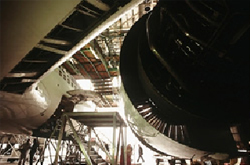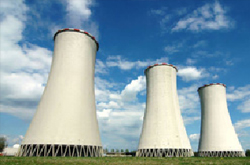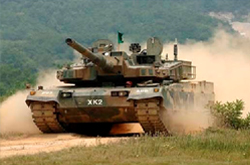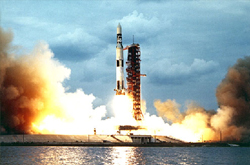Business Areas
Best technology in clean hydrogen energy, high pressure gas, disaster prevention business, safety equipment
Halon 1301
Halon 1301 is a compound that maintains a colorless and odorless gaseous state at room temperature. The name Bromotrifluoromethane is more commonly known as Halon 1301 in Korea, and is commonly used in fire extinguishers.
It was developed in 1954 by a joint venture between the U.S. Army and Dupont, and is an effective gas fire suppression system in the 1960s. It has been.
Halon 1211, an electric gas fire extinguishing agent used for similar purposes, has been widely used for military and aerospace applications because it was ideal for use in indoor or space ships and tanks where ventilation and ventilation are not possible immediately after use.
However, since the Halon 1301 extinguishing agent has less toxicity of by-products when used than the Halon 1211 extinguishing agent, it was gradually replaced by the 1301 extinguishing agent.
It is currently applied to the most effective and common fire fighting systems used in commercial aircraft, and is indispensable in places where aviation engines, cargo compartments and generators are installed.
Halon 1301, a fire extinguishing agent with many advantages, has a fatal disadvantage: it is a kind of halogen compound that destroys the ozone layer. The Montreal Protocol for the protection of the ozone layer prohibits the production of Halon 1301 in most countries, and it has been continually unavailable except for essential uses.
The manufacture of the Halon 1301 fire extinguisher is also not allowed except for essential uses.
Physical properties
| Properties | |
|---|---|
| Chemical formula | CBrF3 |
| Molar mass | 148.910¬†g¬ЈmolвИТ1 |
| Appearance | Colorless gas |
| Odor | Odorless[1] |
| Density | 1.538 g/cm3¬†(at вИТ58¬†¬∞C (вИТ72¬†¬∞F)) |
| Melting point | вИТ167.78¬†¬∞C (вИТ270.00¬†¬∞F; 105.37¬†K) |
| Boiling point | вИТ57.75¬†¬∞C (вИТ71.95¬†¬∞F; 215.40¬†K) |
| Solubility in water | 0.03 g/l (20 °C (68 °F)) |
| log P | 1.86 |
| Vapor pressure | 1434 kPa (20 °C (68 °F)) |
| Hazards | |
| Flash point | Non-flammable |
| Lethal dose or concentration (LD, LC): | |
| LCLo (lowest published) | 834,000 ppm (rat, 15 min)[2] |
| NIOSH (US health exposure limits): | |
| PEL (Permissible) | TWA 1000 ppm (6100 mg/m3)[1] |
| REL (Recommended) | TWA 1000 ppm (6100 mg/m3)[1] |
| IDLH (Immediate danger) | 40,000 ppm[1] |
Application
Aviation engine and cargo compartment, generator, military, space, etc.





